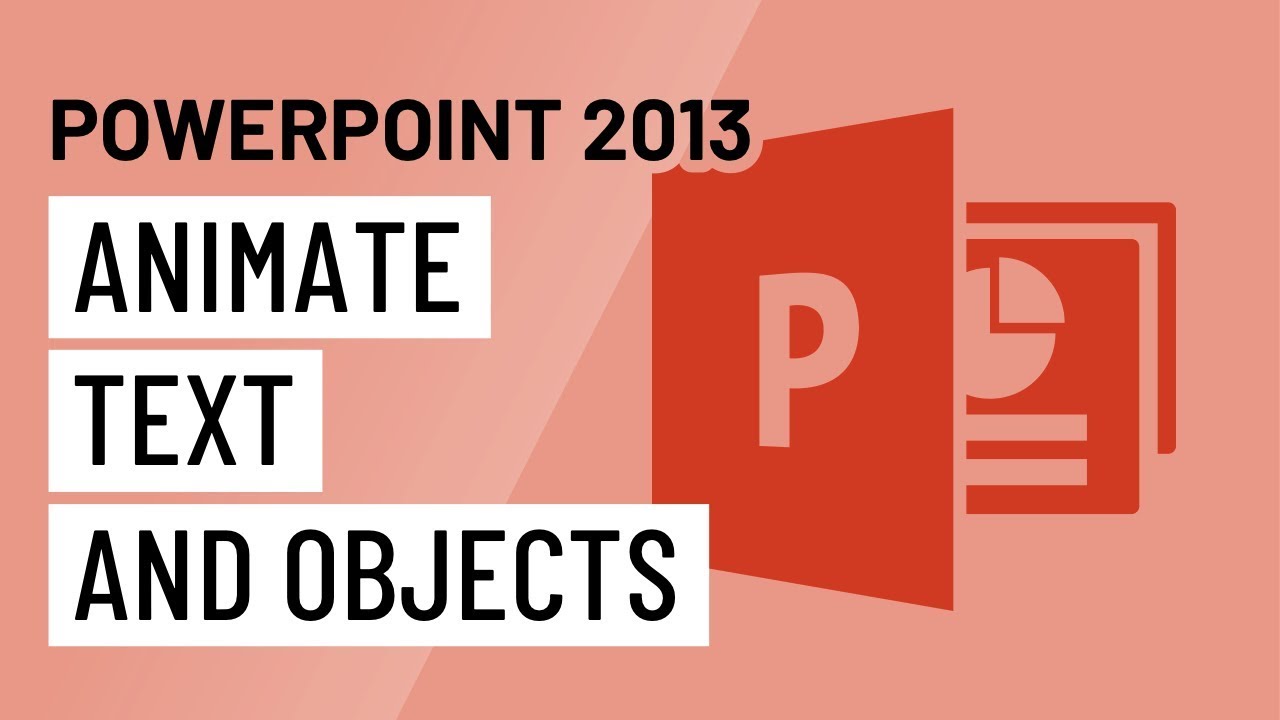
Introduction:
Microsoft PowerPoint 2013 offers a robust set of animation tools that can transform your presentations from static displays of information to dynamic, engaging experiences. The ability to animate text and objects adds a layer of visual storytelling, making your presentations more memorable and impactful. In this extensive guide, we will explore the intricacies of animating text and objects in PowerPoint 2013, covering various animation types, customization options, and best practices to bring your slides to life.
Understanding the Power of Animation:
- Enhanced Engagement: Animation captivates your audience’s attention by introducing movement and dynamics to your slides. It creates a more engaging experience, keeping viewers focused on the content.
- Sequential Storytelling: Animations allow you to narrate a story sequentially, guiding the audience through key points or emphasizing specific information. This sequential storytelling enhances clarity and comprehension.
- Visual Emphasis: By strategically animating text and objects, you can emphasize important elements, control the flow of information, and guide your audience’s gaze to specific areas of the slide.
Animating Text in PowerPoint 2013:
- Applying Entrance Animations:
- Procedure:
- Select the text box or individual text.
- Navigate to the “Animations” tab in the Ribbon.
- Choose an Entrance animation from the gallery.
- Procedure:
- Adding Emphasis Animations:
- Procedure:
- Select the text with an applied entrance animation.
- Navigate to the “Animations” tab.
- Choose an Emphasis animation to highlight the text after its entrance.
- Procedure:
- Implementing Exit Animations:
- Procedure:
- Select the animated text.
- Navigate to the “Animations” tab.
- Choose an Exit animation to control how the text exits the slide.
- Procedure:
- Customizing Animation Effects:
- Procedure:
- Select the text with the applied animation.
- Open the Animation Pane to customize the animation effect, duration, and timing.
- Procedure:
Animating Objects in PowerPoint 2013:
- Entrance Animations for Objects:
- Procedure:
- Select the object (e.g., image, shape).
- Navigate to the “Animations” tab.
- Choose an Entrance animation from the gallery.
- Procedure:
- Emphasis Animations for Objects:
- Procedure:
- Select the object with an applied entrance animation.
- Navigate to the “Animations” tab.
- Choose an Emphasis animation to highlight the object after its entrance.
- Procedure:
- Exit Animations for Objects:
- Procedure:
- Select the animated object.
- Navigate to the “Animations” tab.
- Choose an Exit animation to control how the object exits the slide.
- Procedure:
- Motion Paths:
- Procedure:
- Select the object.
- Navigate to the “Animations” tab.
- Choose “Add Animation” > “Motion Paths” to create custom movement paths.
- Procedure:
Advanced Techniques for Animation in PowerPoint 2013:
- Layered Animations:
- Procedure:
- Utilize the Animation Pane to control the sequence of animations.
- Ensure that objects and text are layered appropriately for a seamless animated flow.
- Procedure:
- Animation Triggers:
- Procedure:
- Create an animation trigger by selecting an object.
- In the Animation Pane, right-click on the desired animation and choose “Start With Previous” or “Start After Previous.”
- Procedure:
- Smooth Transitions:
- Procedure:
- Adjust the transition settings in the “Transition to This Slide” pane to create smooth transitions between slides.
- Fine-tune transition duration and apply sound effects if desired.
- Procedure:
- Reuse Animations:
- Procedure:
- Use the Animation Painter tool to copy animations from one object or text to another.
- Click on the Animation Painter icon in the Ribbon and apply it to the target element.
- Procedure:
Practical Tips for Effective Animation in PowerPoint 2013:
- Subtle and Purposeful: Keep animations subtle and purposeful. Avoid overwhelming your audience with excessive movement, and ensure that each animation serves a specific purpose in conveying information.
- Consistency is Key: Maintain consistency in animation styles across slides for a cohesive presentation. Use similar entrance, emphasis, and exit animations for a professional look.
- Consider Your Audience: Tailor your animation choices to your audience and presentation context. Formal presentations may benefit from more restrained animations, while creative presentations can explore more dynamic effects.
- Practice Timing: Fine-tune animation timing to match your speaking pace. Ensure that animations enhance, rather than detract from, your verbal delivery.
- Preview and Iterate: Regularly preview your slides to ensure animations work as intended. Make adjustments as needed, and iterate through your presentation to refine the visual storytelling.
Conclusion:
Animating text and objects in PowerPoint 2013 is a powerful tool for elevating your presentations and creating a more engaging and dynamic experience for your audience. By mastering the techniques of entrance, emphasis, and exit animations, as well as advanced features like motion paths and triggers, you can bring your slides to life. As you embark on the creative journey of animating text and objects, let the principles of subtlety, consistency, and purpose guide you to presentations that captivate, inform, and leave a lasting impression. Happy animating!